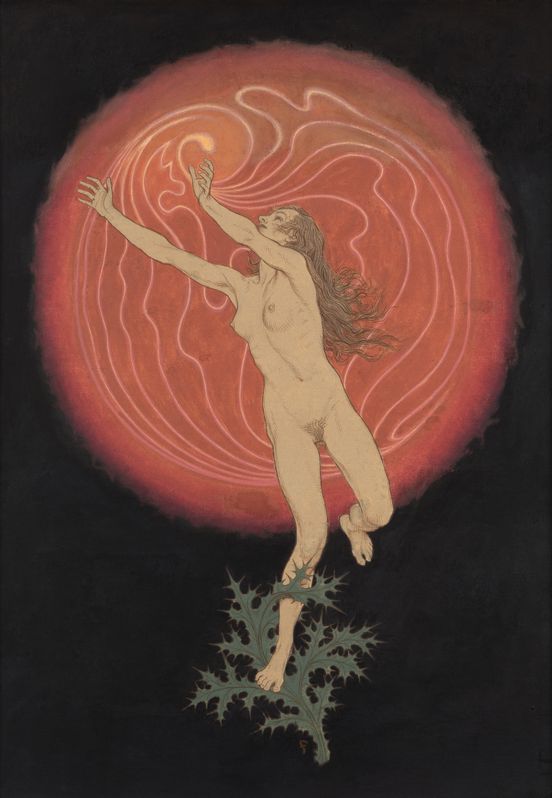| Genre | Painting |
| Materials | Oil on canvas |
| Size | 100 x 70 cm |
| Signature | signed bottom center: F |
Research status
Provenance is established. The cycle was identified as a cultural asset extorted due to Nazi persecution (looted art). “Tempeltanz der Seele” was handed back to the daughters of the former owner and then repurchased at market price.
A case of Nazi looting
On the evening of 30 September 1935, Richard Neuhäuser (1882–1935) locked himself in the kitchen at the headquarters of Gebr. Grumach AG. He was the company’s director and a Jewish German. Two weeks earlier, when the “Nuremberg Race Laws” were adopted, he had been stripped of his rights and his relationship with his non-Jewish partner, met after his wife’s early death, became a crime punishable by imprisonment. Violent attacks, including by Nazis among his own employees, were now an everyday occurrence. There had been calls to boycott his company ever since 1933.
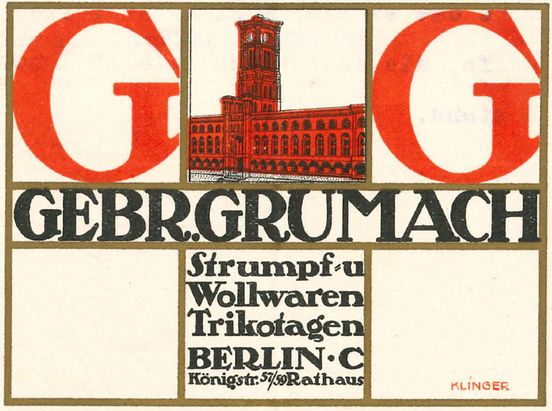
Company logo of Gebr. Grumach AG
[Translate to English:] Signet der Firma Gebr. Grumach AG
© Repro: Berlinische Galerie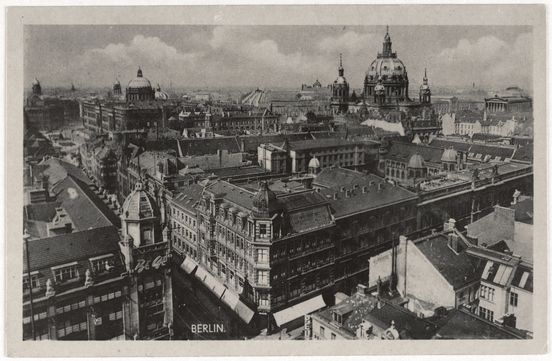
Berlin c. 1940, historical postcard
[Translate to English:] Berlin um 1940, Historische Ansichtskarte
© Repro: Berlinische GalerieRichard Neuhäuser could have fled to South Africa in early October 1935, but he decided at the last moment to stay. Now he taped up the windows and doors of his company kitchen, turned on the gas oven, wrote a warning on the door and was ready to end his life. He was found the next morning still breathing, but he died the following day of gas poisoning.

SA paramilitaries outside the Nathan Israel department store opposite Gebr. Grumach AG during the “Jew Boycott” on 1 April 1933
SA paramilitaries outside the Nathan Israel department store, Berlin, 1933
© Bundesarchiv, Bild 102-14469 / CC-BY-SA 3.0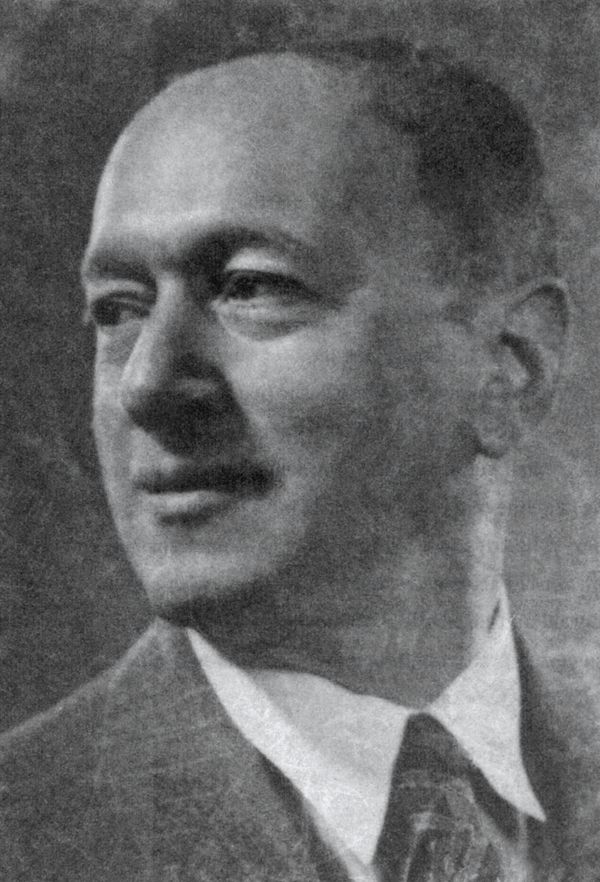
Richard Neuhäuser, c. 1930
Richard Neuhäuser, c. 1930
© Photo: unknown; Repro: Berlinische GalerieAfter 1900 Richard Neuhäuser had begun overseas trading in cloth and lacquerware from Japan and he also sold Japanese art in Europe. At an event in Berlin hosted by Louis Grumach (1847–1933) he met the host’s daughter Meta (1885–1928). They married and moved into a spacious new apartment at Bayerischer Platz 1.
The couple commissioned Fidus to decorate their music room, which had matte golden panelling and furniture upholstered in black. He painted “Temple Dance of the Soul”.
In a letter to Fidus (Hugo Höppener), Neuhäuser describes the interior of the music room where the cycle is to hang, 26 August 1910:
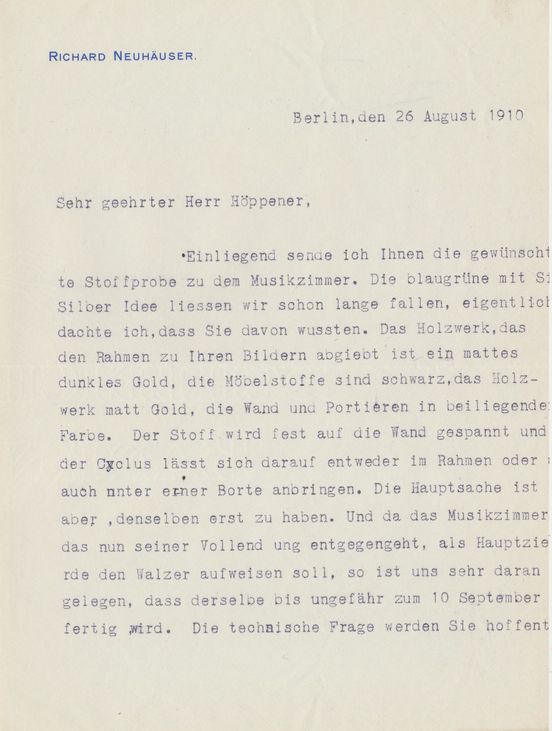
Letter from Richard Neuhäuser to Fidus (Hugo Höppener), 26 August 1910
© Repro: Archiv der deutschen Jugendbewegung, Witzenhausen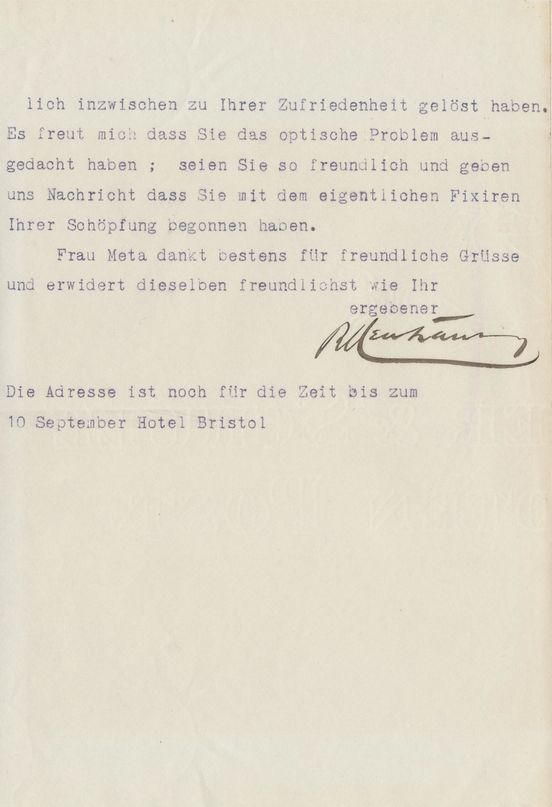
Letter from Richard Neuhäuser to Fidus (Hugo Höppener), 26 August 1910
© Repro: Archiv der deutschen Jugendbewegung, Witzenhausen
Bayerischer Platz, 1910, on the right no. 1, where the Neuhäusers lived. Fidus painted the cycle for the music room.
Bayerischer Platz in Berlin, 1910, Historical postcard
© Repro: Berlinische GalerieThe five motifs for “Temple Dance of the Soul”
A research trip enabled her to escape to Australia. In 1938, just before she left, she sold the cycle “Temple Dance of the Soul”, which she had been storing in the attic over the Gebr. Grumach AG building on Königstrasse. It was bought by the goldsmith Joachim Giesche (1901–1991), a Fidus fan, who handed the works over to the artist for safekeeping as he had nowhere to put them. From August 1939 Giesche spent six years in military service and he was only able to take the cycle back after the war. In 1974, from Bielefeld, he sold the five paintings to the Berlinische Galerie, which was being set up at the time.
For a long time, it was believed that Fidus had not let anyone else have the work until late in life. In 2015 a modest jotting opened the trail to its true provenance: Fidus had noted the original owner on a postcard sent by Giesche in 1947. The daughters of Gabriele Neuhäuser were thereupon traced to Australia and the United States, where they were surprised to learn about this work in Berlin of which they had no knowledge.
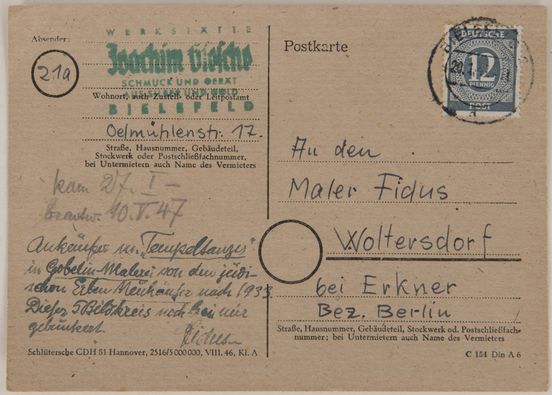
This note opened the way to establishing provenance: “Buyer of my tapestry painting ‘Tempeltanz’ from the Jewish Neuhäuser heirs after 1933. This 5-picture cycle still stashed with me.”
Postcard from Joachim Giesche to Fidus (Hugo Höppener), 1947
© Photo: Kai-Annett Becker